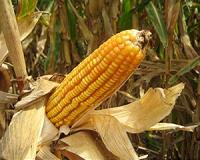 |
Los Banos, Philippines (AFP) Sept 3, 2010 The mobile phone may soon replace the centuries-old straw hat as the Filipino rice farmer's must-have accessory. Already responsible for helping to topple a government in the Southeast Asian archipelago, mobile phone text messaging could now help launch a neat little agricultural revolution. "Precision agriculture could become available to small-scale farmers at their fingertips within a few minutes," says Roland Buresh of the International Rice Research Institute (IRRI). The institute develops new rice varieties and crop management techniques aimed at reducing poverty and ensuring that rice production is sustainable, has minimal environmental impact and can cope with climate change. The non-profit organisation, which has its headquarters at Los Banos near the Philiipines capital Manila, now hopes to harness the country's mobile-phone mania to bring cutting edge techniques to an ancient system. The Philippines has been called the texting capital of the world, with some 70 million mobile phone users sending up to 300 million messages a day. In 2001, texting was credited with helping topple then-president Joseph Estrada when it was used to bring tens of thousands of demonstrators onto the streets in protest over corruption. From this month, IRRI scientists led by Buresh plan to use text messaging to send precise management advice and fertilizer recommendations to local farmers by Interactive Voice Response (IVR). All the farmer has to do is dial a number on his mobile phone, toll free. An automated voice message will then ask him a series of questions to which he should respond by pressing a number on the phone keypad. Once he has answered all the questions he will receive a text message with recommendations on the amounts, sources and timings of fertilizer applications for his specific rice paddy. The automated voice recording is available in English and Filipino and asks questions about the season, size of field, harvesting times and water supply. Project scientist Rowena Castillo says small-scale Philippines rice farmers have relied mainly on a trial-and-error approach to crop management. "In the past they've asked technicians (for advice) and (learnt from) their own experience," Castillo told AFP in an interview. But rice farmers are seldom visited by agricultural technicians, Castillo said, while information via text message can reach even the most remote farmers immediately and directly. Although Castillo thinks many young Filipino farmers are already relatively tech-savvy, she admits that the older generation may struggle a bit with the IVR technology. "Sometimes farmers are hesitant to use (the programme), especially old farmers because they are not used to cellphones, but their sons and daughters could help them." However, during initial trials of the programme, most feedback from the farmers had been positive, Castillo said. "Most of them are very enthusiastic because they said that instead of asking the technicians they would use their phones." Rice is the staple food of the Philippines but the country is not self-sufficient and last year it was the world's largest importer of the grain.
Share This Article With Planet Earth
Related Links Farming Today - Suppliers and Technology
 Study Predicts Massive Impact Of Drought Tolerant Maize In Africa
Study Predicts Massive Impact Of Drought Tolerant Maize In AfricaNairobi, Kenya (SPX) Sep 03, 2010 As climate change intensifies drought conditions in Africa and sparks fears of a new cycle of crippling food shortages, a new study finds widespread adoption of recently developed drought-tolerant varieties of maize could boost harvests in 13 African countries by 10 to 34 percent and generate up to US$1.5 billion in benefits for producers and consumers. "We need to move deliberately, but w ... read more |
|
| The content herein, unless otherwise known to be public domain, are Copyright 1995-2010 - SpaceDaily. AFP and UPI Wire Stories are copyright Agence France-Presse and United Press International. ESA Portal Reports are copyright European Space Agency. All NASA sourced material is public domain. Additional copyrights may apply in whole or part to other bona fide parties. Advertising does not imply endorsement,agreement or approval of any opinions, statements or information provided by SpaceDaily on any Web page published or hosted by SpaceDaily. Privacy Statement |